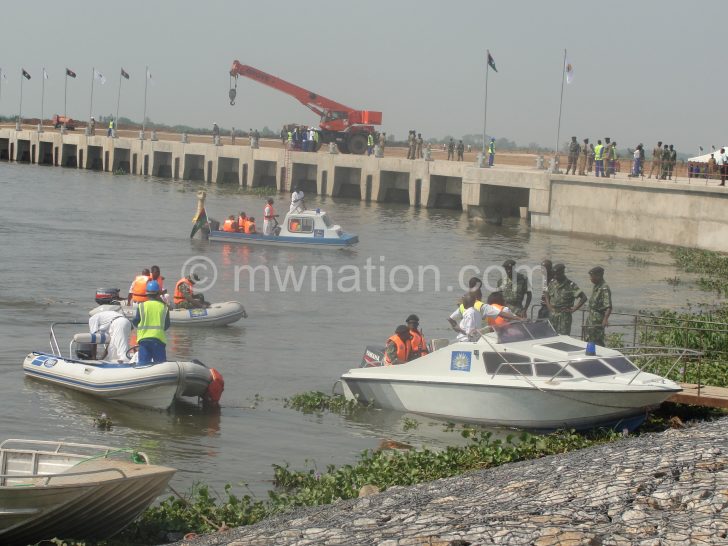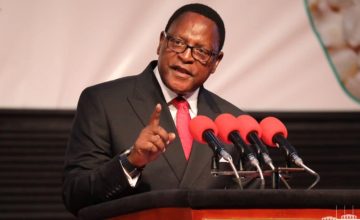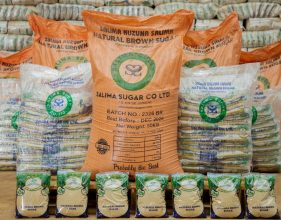Nsanje Port dream crumbles
The much-touted Nsanje World Inland Port project, which has already cost the taxpayer billions of kwacha, is slowly turning into a mirage after government has now removed it from its top priorities in the next five years.
Since its inception in 2008, the project—and one of the flagship projects in the Democratic Progressive Party (DPP) 2014 manifesto—has been left out of the MGDS III.

The objective of MGDS II implemented between 2011 and 2016 was to continue reducing poverty through sustainable economic growth and infrastructure development. The short-term plan identified six broad thematic areas, namely; sustainable economic growth; social development; social support and disaster risk management; infrastructure development; governance; and gender and capacity development.
But within these six thematic areas, the MGDS II isolated nine key priority areas (KPAs), namely; agriculture and food security; transport infrastructure and Nsanje World Inland Port; energy, industrial development, mining and tourism; education, science and technology; public health, sanitation, malaria and HIV and Aids management; integrated rural development; greenbelt irrigation and water development; child development, youth development and empowerment; and climate change, natural resources and environmental management.
However, Ministry of Finance, Economic and Development chief economist Sipho Billiat told a group development partners two weeks ago, the trimmed MGDS III has five priority sectors of agriculture and climate change management, education and skills development, energy and industrial development, transport and ICT infrastructure and health and population management.
The aim of streamlining the sectors is to maximise use of resources on fewer priorities based on recommendations of the country’s donors.
But DPP spokesperson and Minister of Transport Francis Kasaila, in a telephone interview on Thursday, downplayed the development, saying the project is on course despite, setbacks.
Said Kasaila: “We have not seen the draft MGDS III but suffice to say the project is ongoing. That draft can change shape as consultations are still ongoing. The current status is that the issue is being handled by the tripartite heads of States of Malawi, Zambia and Mozambique. They met once and they plan to meet again soon to discuss the feasibility study report which Mozambique demanded.”
Currently, the Nsanje Port is a swampy fishing ground for locals. It is a neglected site depicting an abandoned dockyard with the Shire River choked by weeds. As of Thursday this week, a disused boat is the only vessel in sight.
In June 2016, the Shire River on the section of the port had completely dried up as if to vindicate Mozambique which questioned the viability of the project which argued that water levels in both Shire and Zambezi rivers were going down.
The drying of the port area was a result of the dwindling of water inflows in the Shire River and Lake Malawi due to the El Nino weather episode experienced in the 2015/16 rainy season which has also affected power generation in the country.
Chairperson for Parliamentary Committee on Transport and Public Infrastructure Victor Mbewe, who in October 2016 led a delegation to visit the site, admitted in a telephone interview on Thursday that the project had encountered huge funding challenges, among other challenges.
Said Mbewe: “From what we understand, it is not that the government is unwilling to pursue the project, but it requires mammoth financial investment and donors have not been willing to support it. Unless the government identifies a donor, the situation for the project will continue to go from bad to worse. No wonder some are calling it a white elephant. With our current economic position, we cannot afford to fund it alone.”
But according to Kasaila, the matter is now being handled at the highest level by presidents of Malawi, Mozambique and Zambia whose next meeting would discuss recommendations after the publication of the feasibility study.
“This should not be taken as a DPP project but rather a national project which should be owned by every Malawian. As such, whether the DPP is in power or not, there should be efforts to make the project a reality,” he said.
In 2015, Mozambique Minister of Transport Carlos Mesquita said the viability of the waterway project could only be assessed if the consultant determines the behaviour of water levels in the Shire and Zambezi rivers.





